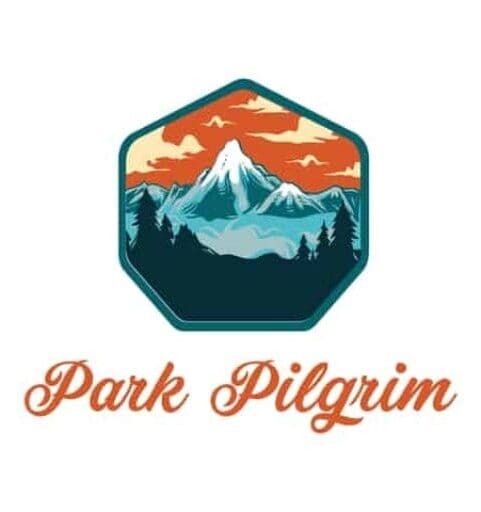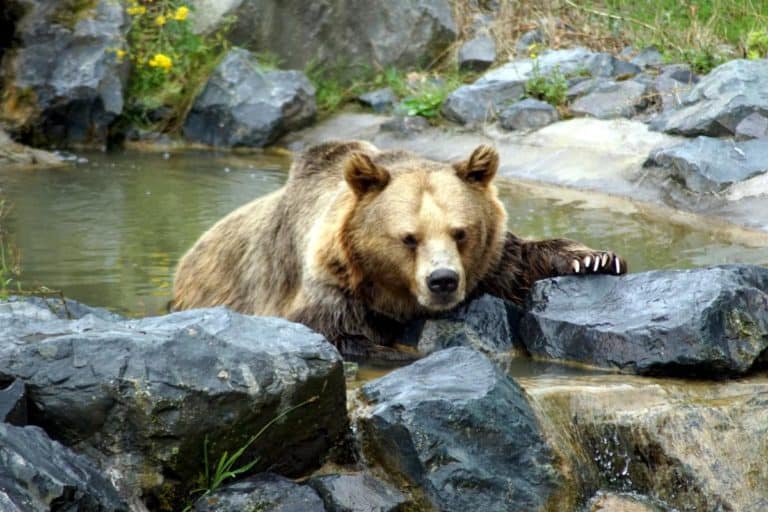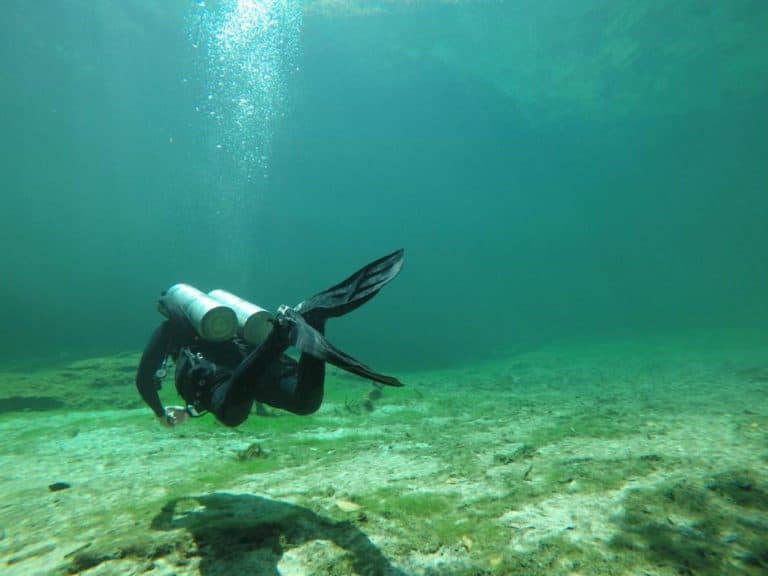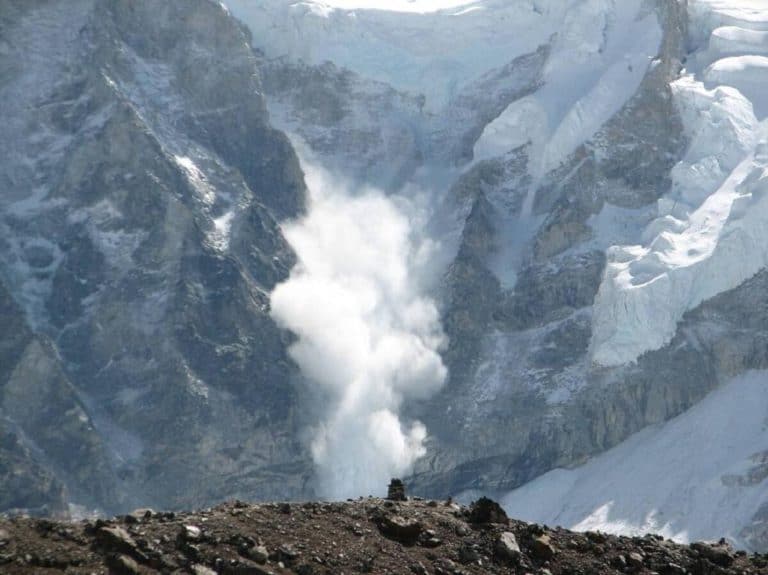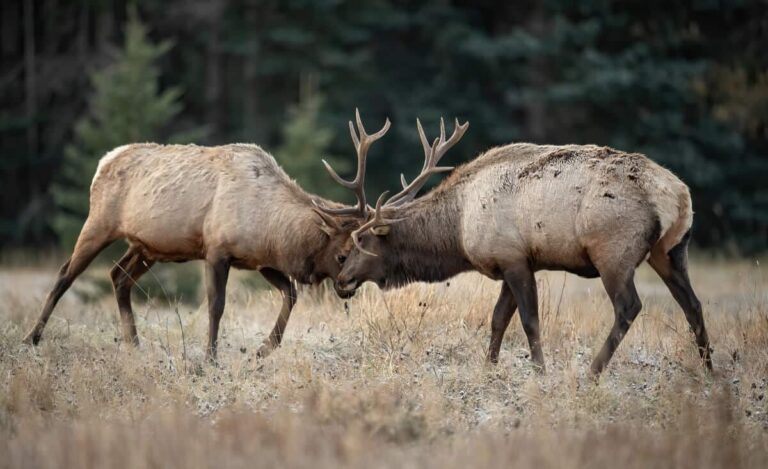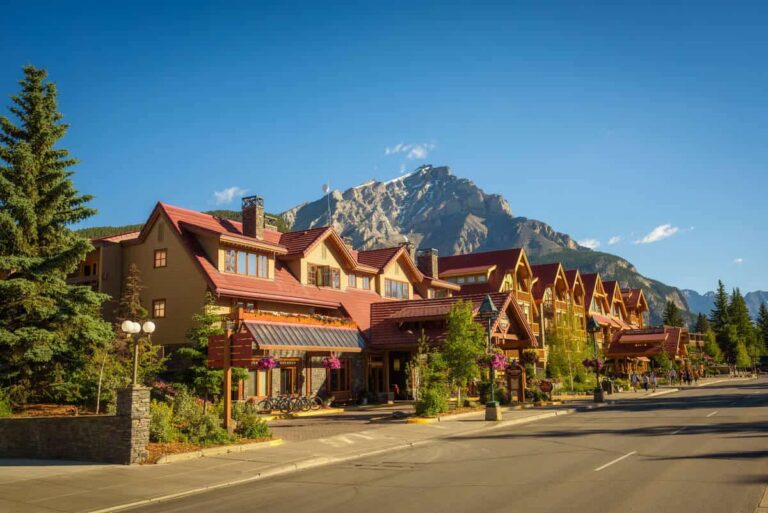The Best of Banff and Lake Louise by Bike: A Cyclist’s Guide
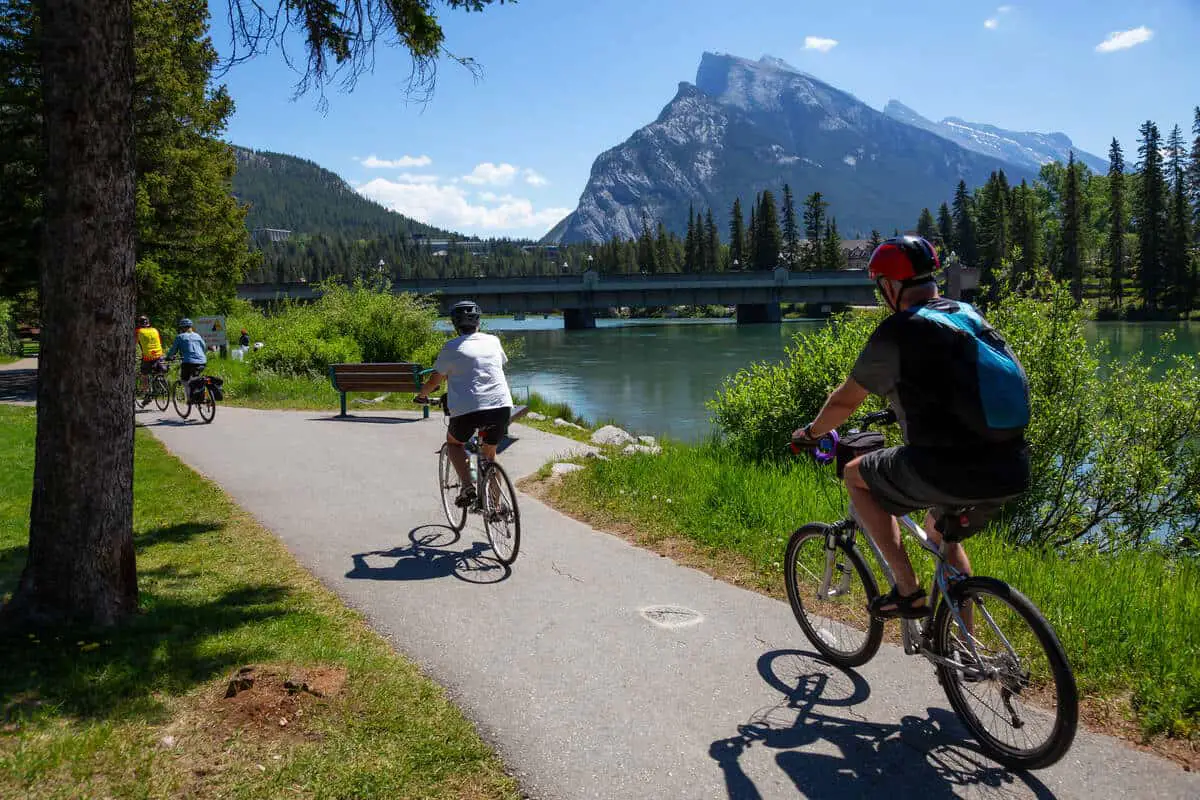
Hiking might be Banff’s number one outdoor activity, but the park also offers lots of extraordinary cycling opportunities. In this post, I’ll discuss all the ins and outs of cycling in Banff National Park.
Cycling is one of Banff’s most accessible and probably best ways to enjoy the outdoors. There are many opportunities, both on and offroad and obtaining a bike shouldn’t be too much of a problem as there are many bike rentals in the park.
To ensure you get the most out of your biking trips in Banff, I listed everything you need to know in this post, including some routes you might want to consider. Let’s have a look.
Is Cycling in Banff and Lake Louise Hard?
Like the answer to many other questions: it depends. It doesn’t have to be. Several cycling routes lead across paved roads; most are pretty flat because they are at the bottom of the Bow valley.
And things are even easier if you rent an electric bike or go on an electric bike tour. So I wouldn’t worry too much about undulating terrain as long as you stay on paved roads.
If you choose mountain biking, on the other hand, things can get steep depending on the trail you choose.
Cycling Routes in Banff National Park

While cycling routes make for an entire post in and of itself, I listed some of the most obvious and interesting ones below. There are, of course, many more. Anyway, this list will provide you with some excellent opportunities to explore.
Road Bike/Electric Bike/Hybrid Bike
These trails go over paved roads and are suited to road bikes, electric bikes and hybrid bikes.
- Lake Minnewanka Scenic Drive
- Bow Valley Parkway (Highway 1A, including Johnston Canyon)
- Banff Legacy Trail
- Golf Course Loop
- Icefields Parkway
Mountain Bike / Fat Bike
These trails go over rocky paths through the forest. They are all quite different, from easy to challenging.
- Lake Minnewanka to Aylmer Lookout
- Rundle Riverside Trail
- Star Wars Trail
- Stoney Squaw Trail
When to Bike in Banff?
The best time for biking in Banff National Park is from June until early October. Cycling conditions can be poor before and after because of the snow and cold.
Also, depending on the length of your trip, don’t go out too early, as the mornings in the park can be rather chilly. If your itinerary isn’t too long, begin your trip after 10 am. It allows you to have a good breakfast and a decent energy supply. You will need it.
What to Wear?
What to wear during your cycling trip through the park depends on the month. June and October can be significantly colder than the months in between.
As you’re in the Rockies, ensure you can always put on layers of clothing. Cycling will get you warm, and a cycling shirt will suffice in most cases. However, the weather in the mountains can quickly change and, depending on your location and altitude, can be surprisingly cold.
So take a small backpack to carry additional clothing, like a training jacket, a vest or a (fleece) sweater.
What to Bring?
Bringing the essentials will make your cycling trip more relaxing and enjoyable. Here are three things you shouldn’t forget:
- Extra clothing like a (cycling) jacket, vest or (fleece) sweater so you can adjust to changing weather; also suitable for when you step off the bike on not-so-warm days
- Energy bars and other high calory food
- Lots of water
Other items to bring:
- A camera or smartphone
- A headlamp when you know you’ll get back home in the dark
- Money to buy lunch or souvenirs, for instance
- GoPro or another action camera to mount on your bike

Biking Tours in Banff National Park
Pretty much every possible activity you can think of in Banff has a tour catered to your needs. This is certainly true for cycling.
While I don’t want to suggest that you need to book a tour to enjoy Banff on a bicycle, there are several that provide extra value. The most interesting ones I outlined below.
Banff Cycle
Banff cycle has several e-bike tours for CAD 199 and CAD 324. It also offers a custom or corporate tour, including multi-day excursions.
Banff Cycle
Address: 327 Railway Avenue, Banff
Phone: +1 403-688-4848
Website: banffcycle.com
E-mail: info@banffcycle.com
Bikescape
Bikespace specializes in e-mountain bike and winter fat bike adventures and has tours and multi-week programs, including one for kids and Ladies Mountain Bike Skill Sessions. They also offer private (group) tours. Prices range between CAD 134 and CAD 300.
Bikescape
Address: 225 Bear Street, Banff
Phone: +1 403 – 688 5440
Website: bikescape.ca
E-mail: info@bikescape.ca
Rocky Mountain Cycle Tours
This Canmore-based company specializes in multi-day road cycling tours in Banff National Park and beyond. They also offer the option of custom tours. The prices of their tours range from CAD 1,895 to CAD 3,995.
Rocky Mountain Cycle Tours
Address: 186 Kananaskis Way, Canmore
Phone: +1 866 – 747 8968
Website: rockymountaincycle.com
E-mail: rockymountaincycletours@gmail.com
White Mountain Adventures
White Moutain Adventures also specializes in e-bike tours. Prices range between CAD 99 and CAD 159. The company also offers custom and private e-bike program options.
White Mountain Adventures
Address: 202 Bear Street, Banff
Phone: +1 800 – 408 0005
Website: whitemountainadventures.com
E-mail: info@whitemountainadventures.com
What About Bears and Cycling in Banff?
A bear encounter is always possible in the Rockies. Being on a bike is slightly riskier than hiking. This has to do with how quickly and quietly you’re approaching. The combination could startle a bear.
This is especially true when mountain biking downhill through the woods. Therefore, having a bear spray on you at all times is strongly advised.
Carry it in a hip or chest holster so you can easily grasp and use it. Don’t put it in your backpack as it will take you too long to be able to use it.
Cycling Traffic Rules You Should Know
Traffic rules are the tedious part of cycling. They (well, at least some) are good to know when cycling through Banff National Park.
- The law states that cyclists and their passengers under 18 must wear an approved bicycle safety helmet (although it’s a good idea to wear a helmet regardless of age).
- Cyclists are required to ride as close to the right curb as possible (you are allowed to ride on the shoulder of highways). You may need to ride further out when avoiding drainage grates, potholes, trash, gravel or sand, wet or slippery surfaces, and rutted or grooved pavement.
- A bicycle, when being ridden, is regarded as a vehicle. A cyclist, like other drivers, must conform to road regulations.
- As a cyclist, you must equip your bicycle with at least one headlamp (but no more than two), one red tail lamp, and at least one red reflector installed on the back of the bicycle in case you want to ride after dark. Wear apparel that is bright and reflective.
What Types of Bikes Can You Rent?
First off, let’s list the bike rental shops in Banff and Lake Louise because you probably didn’t bring your bike along. If you did, please skip this section.
Both towns have quite a few bike rental places. Generally, renting a bike in the park is relatively cheap. The lowest price I found is CAD 10 per hour at Banff Soul Ski and Bike for a town bike.
There are also a few places where you can rent an e-bike to discover Banff at greater speed with less effort. However, renting such a bike comes at a significantly higher price (starting from CAD 69).
The kind of bike you want to rent depends on your needs and desires. If you ride off-road, you’ll need a mountain bike. If you stay on the streets and roads, you have several options.
BANFF
| RENTAL SHOP | ADDRESS | PHONE | WEBSITE | |
|---|---|---|---|---|
| Banff Adventures | 211 Bear Street | +1 403 – 762 4554 | banffadventures.com | info@banffadventures.com |
| Banff Cycle | 327 Railway Avenue | +1 403 – 985 4848 | banffcycle.com | info@banffcycle.com |
| Banff Soul Ski and Bike * | 203a Bear Street | +1 403-760-1650 | soulskiandbike.com | info@soulskiandbike.com |
| Black Diamond Bike & SUP Rentals | 201 Lynx Street | +1 825 – 398 9563 | blackdiamondbanff.com | rentals@blackdiamondbanff.com |
| Chateau Mountain Sports | 405 Spray Avenue | +1 403 – 762 2508 | chateaumountainsports.com | through form on website |
| Snowtips-Bactrax | 225 Bear Street | +1 403 – 762 8177 | snowtips-bactrax.com | snowtips@telusplanet.net |
| SkiBig3 Adventure Hub | 114 Banff Avenue | +1 403 – 762 4754 | skibig3adventurehub.com | info@skibig3.com |
| Ultimate Sports | 206 Banff Avenue | +1 403 – 762 0547 | ultimatebanff.com | retail@ultimatebanff.com |
LAKE LOUISE
| RENTAL SHOP | ADDRESS | PHONE | WEBSITE | |
|---|---|---|---|---|
| Chateau Mountain Sports | 111 Lake Louise Drive Lake Louise | +1 403 – 522 3837 | chateaumountainsports.com | through form on website |
| Wilson Mountain Sports | Building A Samson Mall, 101 Lake Louise Drive | +1 403 – 522 3636 | wmsll.com | info@wmsll.com |
Maybe you’re not picky about the kind of bike to rent, or maybe you don’t know what bike best suits your intended trip. To help make your decision easier, I put the pros and cons of the different types of bikes below.
Mountain Bikes
PROS
- Mountain bikes are built to withstand rough terrain, making them a durable choice for off-road cycling
- Mountain bikes can be used for a variety of cycling activities, including cross-country riding, downhill racing
- The wider tires and suspension system on a mountain bike provide increased control and stability on rough terrain
- Low-impact sport (less stress on your joints than activities like running). Some mountain bikes come equipped with padded seats and suspension systems that help to absorb shock and improve rider comfort
CONS
- Mountain bikes tend to be heavier than road bikes, which can make them less efficient for long-distance rides or rides on smooth surfaces
- Mountain bikes can be more expensive than road bikes, especially if you are looking for a high-end model with advanced features
- The wider tires and suspension system on a mountain bike can also make them less efficient on smooth surfaces, as they create more rolling resistance
- Mountain biking can be more challenging than road biking, especially for inexperienced riders or those who are not in good physical shape. Overall, it’s important to consider the type of terrain you will be riding on before deciding whether a mountain bike is the right choice for you
Fat Bikes

PROS
- Fat bikes have wide, knobby tires that provide excellent traction on a variety of terrain, including sand, snow, and muddy conditions
- Fat bikes can be used for a variety of cycling activities, including trail riding, commuting, and even racing
- The wide tires on a fat bike provide increased stability and control, which can be especially helpful on rough or uneven terrain
- Fat bikes often have a more upright riding position and a comfortable saddle, which can make them more comfortable for long rides
CONS
- Fat bikes tend to be heavier than traditional bicycles, which can make them less efficient for long-distance rides or rides on smooth surfaces
- Fat bikes may not be as efficient as road bikes or mountain bikes on smooth surfaces, due to their wide tires and suspension system
Road Bikes
PROS
- Road bikes are designed for speed and efficiency, making them a great choice for racing or long-distance rides
- Road bikes are typically lighter than mountain bikes, which makes them easier to ride and more efficient on smooth surfaces
- The streamlined design of a road bike, including the drop handlebars and thin tires, helps to reduce wind resistance and improve rider aerodynamics
- Road bikes are generally easier to ride than mountain bikes, especially for inexperienced riders or those who are not in good physical shape
CONS
- Road bikes can be less comfortable than mountain bikes, as they do not have a suspension system to absorb shock
- Road bikes are not built to withstand rough terrain and may not be as durable as mountain bikes
- Road bikes are not as versatile as mountain bikes, as they are not well-suited for off-road cycling or rough terrain
- The thin tires and lack of a suspension system on a road bike may make them less stable and less able to handle rough or uneven surfaces
Hybrid Bikes
PROS
- Hybrid bikes are a combination of road and mountain bikes, making them suitable for a variety of terrain and cycling activities
- Hybrid bikes often have a more upright riding position and a comfortable saddle, which can make them more comfortable for long rides
- Hybrid bikes are generally easier to ride than road bikes, as they have a more upright position
- Hybrid bikes are built to withstand a variety of terrain, making them a durable choice for cycling.
CONS
- Hybrid bikes tend to be heavier than road bikes, making them less efficient for long-distance rides or smooth surfaces.
- Hybrid bikes may not be as efficient as road bikes on smooth surfaces, due to their wider tires and suspension system.
- Hybrid bikes are not designed for speed, and may not be as fast as road bikes on smooth surfaces.
Electric Bikes
PROS
- E-bikes provide electric assistance to the rider, which can make cycling easier and more accessible for people of all fitness levels
- E-bikes provide a low-impact form of exercise that can be enjoyed by people of all ages and fitness levels
CONS
- E-bikes tend to be more expensive than traditional bicycles, especially if you are looking for a high-end model with advanced features. This makes their rental price higher than that of other bikes
- E-bikes are often heavier than traditional bicycles, which can make them more difficult to transport or store
- Some people may become reliant on the electric assistance of an e-bike, which could decrease their overall physical fitness and cycling skills
- E-bikes require regular charging and maintenance, which can be an added inconvenience if something goes wrong with the battery during your trip.
An amazing cycling trip is biking from Banff to Lake Louise (or vice versa) over the Bow Valley Parkway. Clink the link to learn more!
